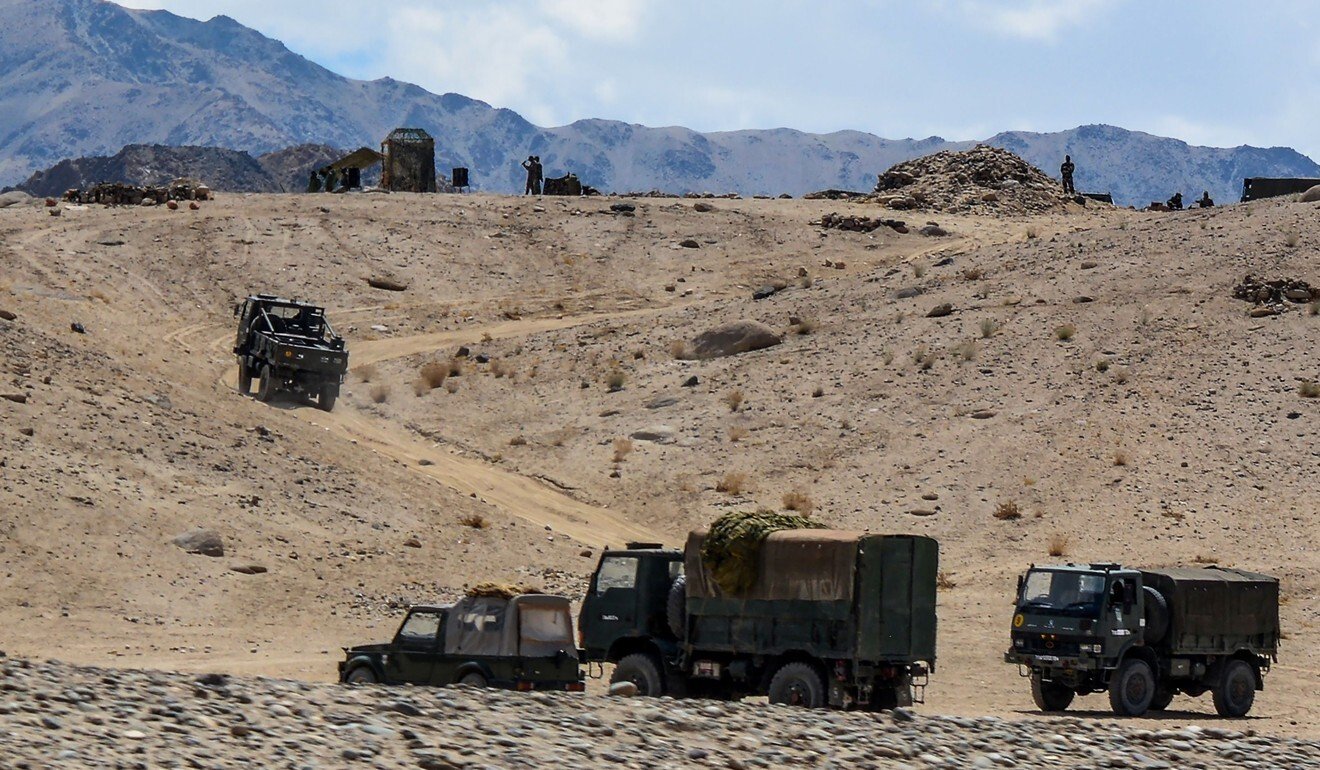
China-India border dispute may force South Asian neighbours to pick a side
- Smaller countries in South Asia have sought to avoid being dragged into the hostility between New Delhi and Beijing
- But observers say it will become harder to maintain this neutrality
Smaller countries in South Asia – such as Nepal, the Maldives and Sri Lanka – have sought to stay above the fray between New Delhi, which has historical influence over the region, and Beijing, which has increasingly invested there.
But observers say the Sino-Indian border dispute will make it harder to maintain this neutrality, with some in India advocating for a fundamental rethink of its relationship with China.
“Many countries in the region are re-evaluating their relationship with China,” said Geeta Kochhar, assistant professor at Jawaharlal Nehru University, noting this first began after the China-US trade war and during the global pandemic. “The greater tension between India and China has changed the balance of the relationship where each state looks at China with a greater sense of fear and anxiety.”

03:08
India bans dozens of Chinese apps, including TikTok and WeChat, after deadly border clash
For Bhutan, a Himalayan nation landlocked by China in the north and India in the south, there have also been tensions over Beijing’s opposition to an environmental project at the Sakteng Wildlife Sanctuary, under Bhutanese control.
Satellite images show Chinese withdrawal from front line with India
Beijing claimed at a June meeting of the Global Environmental Facility that the sanctuary was part of disputed territory between China and Bhutan, but a representative for Bhutan, India, Bangladesh, the Maldives and Sri Lanka said the sanctuary was Bhutanese territory and had never been raised in Bhutan’s previous boundary negotiations with China.
Jeff Smith, a research fellow focused on South Asia at the Washington-based Heritage Foundation, said Beijing had within two months made entirely new claims in Galwan valley and to “a large swathe of eastern Bhutan”.
Smith said that besides Bhutan, others in South Asia would seek to maintain as neutral a tone as possible to avoid angering Beijing or New Delhi. Countries including Sri Lanka and Maldives would be less likely to follow calls in India to boycott Chinese goods, because they lacked a motivation to do so and were “not in as strong an economic position to be imposing punitive economic measures on China”, he said.

04:43
Viral Indian TikTok star says followers ‘can’t stop crying’ due to Indian government ban
Kochhar said smaller South Asian countries – particularly Nepal and Bhutan that share borders with both India and China – have long had to balance between the major powers, with a security paradigm highly dependent on India but a shift in recent years to court opportunities from China.
“But nothing comes free of cost, and they will face challenges in choices they make for the future, especially when the peace … between India and China is changing to greater confrontation, rather than just competition,” she said.
Beijing has for years expanded its presence in South Asia, including through investments under its transcontinental infrastructure strategy, the Belt and Road Initiative, and closer political ties with countries such as Nepal and Sri Lanka seeking to step outside the shadow of Indian influence.
Zhang Jiadong, a former Chinese diplomat in India and professor at Fudan University in Shanghai, said border issues between China and Bhutan could not be resolved easily, because of intervention from New Delhi in their border talks. He said India’s heavy hand in South Asia had made some wary of closer ties with China, but that deteriorating Sino-Indian relations would “not necessarily” compel countries to choose sides.
“As long as there is this balance of power between China and India, there will be space for these South Asian countries and they will not be forced to choose,” he said. “Of course, no country hopes to be controlled by their powerful neighbours, but it’s not true that these countries would no longer welcome China if Sino-Indian relations worsen.”

Smaller South Asian governments have been notably neutral on the Sino-Indian border dispute, compared with heated rhetoric from Beijing and New Delhi.
Nepal’s foreign ministry issued a statement on June 20 that Kathmandu was confident “our friendly neighbours India and China” would be able to peacefully resolve their differences.
Maldives foreign minister Abdulla Shahid tweeted on June 19 only that the Maldives “extends deepest condolences to the people of India for the lives lost in the recent clashes on the border”.
Nischal Pandey, director of the Centre of South Asian Studies in Nepal, said Kathmandu would not be able to side with either Beijing or New Delhi, because this would “outright endanger” its territorial integrity. During the 1962 Sino-Indian border war, Nepal did not permit its land and airspace to be used by either power, he said.
“There is nothing that challenges Nepal’s foreign policy of neutrality more than when there is a warlike situation between our two big neighbours,” he said.
As China-India tensions rise, can New Delhi rely on Russia?
Asanga Abeyagoonasekera, former director general of think tank Institute of National Security Studies Sri Lanka, said there would be an impact on Sri Lanka after the dispute between China and India expanded into a trade conflict, with several Chinese contracts suspended in India and a delay from India on customs clearance for Chinese goods, including those from others in the region.
“All these actions will impact regional stability, especially to nations like Sri Lanka,” he said. “The conflict between China and India will only minimise the strategic space for Sri Lanka, which wishes to continue a close economic relationship with both India and China.”
China and the US, as well as India, have been vying for strategic influence in the Indian Ocean, which is home to key trade waterways, particularly for the world’s oil trade. For Sri Lanka, its strategic position in that triangular power space would mean more external pressures in the coming years, Abeyagoonasekera said.
“Having a balanced relationship is essential,” he said. “To have positive relations with India and China can bring benefits; alienating one might result in specific repercussions.”

